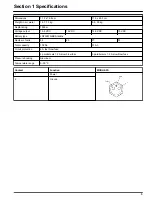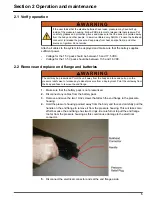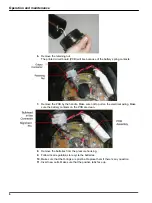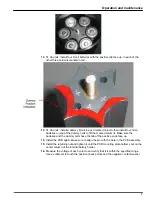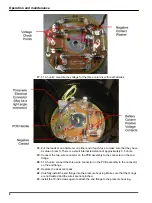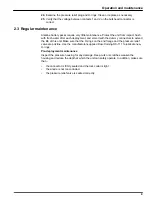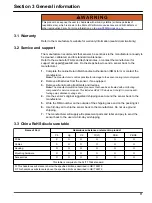
Section 2 Operation and maintenance
2.1 Verify operation
W A R N I N G
If the user thinks that the alkaline batteries have leaks, pressure may have built up
inside of the pressure housing. Follow ESD protocols to release internal pressure. Put
on safety glasses and protective gloves and make sure that the sensor is pointed away
from the body and other people. In a well ventilated very SLOWLY loosen the bulkhead
connector to release the pressure. Keep away from heat, sparks, flame, and other
sources of ignition. Do not smoke.
Attach all cables to the system to be deployed and make sure that the battery supplies
sufficient power.
•
Voltage for the 15 V pack should be between 15 and 17.5 VDC.
•
Voltage for the 13.5 V pack should be between 13.5 and 16 VDC.
2.2 Remove and replace end flange and batteries
W A R N I N G
The unit may be pressurized. Point the unit away from the body and face and pull up on the
pressure relief valve to release any residual pressure from a deployment. Point the unit away from
the body and face to remove the end flange.
1.
Make sure that the battery pack is not pressurized.
2.
Disconnect any cables from the battery pack.
3.
Remove and save the two 10-32 screws that attach the end flange to the pressure
housing.
4.
Hold the pressure housing pointed away from the body and face and carefully pull the
handle on the end flange to remove it from the pressure housing. This will take some
effort because the end flange has two O-rings. Be careful not to pull the end flange
too far from the pressure housing as this could cause damage to the electrical
connector.
5.
Disconnect the electrical connector and set the end flange aside.
5
Summary of Contents for SUBMERSIBLEBATTERYPACKS
Page 2: ......
Page 4: ...Table of Contents 2 ...
Page 6: ...Specifications 4 ...
Page 12: ...Operation and maintenance 10 ...
Page 14: ...General information 12 ...
Page 15: ......





